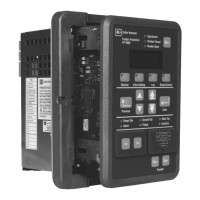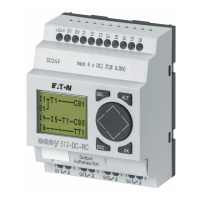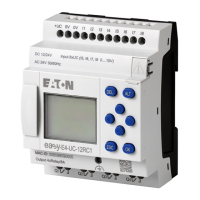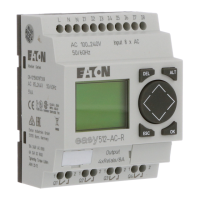I.L. 17562
Page 95
PR 0.3 Effective 8/99
The MP-3000 stores the last four starting current profiles. This profile data cannot be read on
the front-panel display.
9.1.8 Thermal Protection by Direct Measurement - The effects of the motor winding
temperature alarm and trip (P2L2 and P2L3) setpoints, which can be used with RTDs, are not
shown in Figure 9.5. These direct temperature functions protect independently of the I
2
t
algorithm. For the thermal algorithm to take advantage of the stator RTDs, the thermal direct
tripping must be turned on by setting a suitable temperature for trip, not OFF. The settings for
these functions should be based on the recommended maximum stator insulation temperature,
as indicated by the motor manufacturer’s insulation classification on the nameplate.
TABLE 9-1 Example Insulation Temperature Classes (from NEMA MG-1)
Class A B F H
Ambient Temp., deg. C 40 40 40 40
Allowable Rise, deg. C 60 80 105 125
Hot Spot Allowance, deg. C 5 10 10 15
Hot Spot Temp., deg. C 105 130 155 180
NOTE
Rising winding temperature has to travel through the insulation and stator iron to heat the RTD.
When setting stator temperature alarm and direct thermal trip temperatures, keep in mind that
the actual hottest-spot insulation temperature may be 5 to 15 degrees C above the hottest RTD
measurement. This additional temperature rise above insulation rating may cause the insulation
to age twice as quickly as it would if kept within rating. Set thermal trip temperature a little below
insulation rating for longest motor life.
9.1.9 Unbalance Protection – Unbalanced or negative-sequence currents are usually caused by
unbalanced supply voltage. Certain harmonics, such as 5
th
and 11
th
, also cause the same
undesirable effects in the motor even though the harmonics are balanced.
The thermal algorithm incorporates the accentuated heating effect of negative sequence currents
or these certain harmonics, and trips more rapidly for unbalanced conditions than would be
expected from the cold-start balanced protection curve.
In addition to the thermal algorithm, the MP-3000 includes a percent-unbalance function which
alarms and/or trips based on direct measurement of unbalance. This can be used to speed up
tripping and avoid motor heating for a gross problem such as depressed voltage on one phase,
loss of a phase, or an uncleared power-system fault external to the protected motor.
The unbalance is the ratio of negative sequence to positive sequence current. If the motor can
be started in either direction (P1L8 = REV), the MP-3000 takes the larger of the two sequence
currents at the time of the start as the positive sequence current.
The sequence currents are accurately calculated according to the definition, which relates
directly to heating. Note that significant negative sequence current is present if the phase angles
are not symmetrical, even though the three phase current magnitudes are equal.
The unbalance trip and alarm functions can each be set from 4% to 40%, or OFF. A common
start delay is provided (UBSD, P3L13), plus separate trip (UBTR, P3L14) and alarm (UBAR,
P4L8) run delays. Use the run delays to ride through external-system unbalanced faults, which
could last for several seconds – check time curve settings of feeder relays or fuses. Keep in
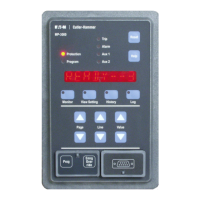
